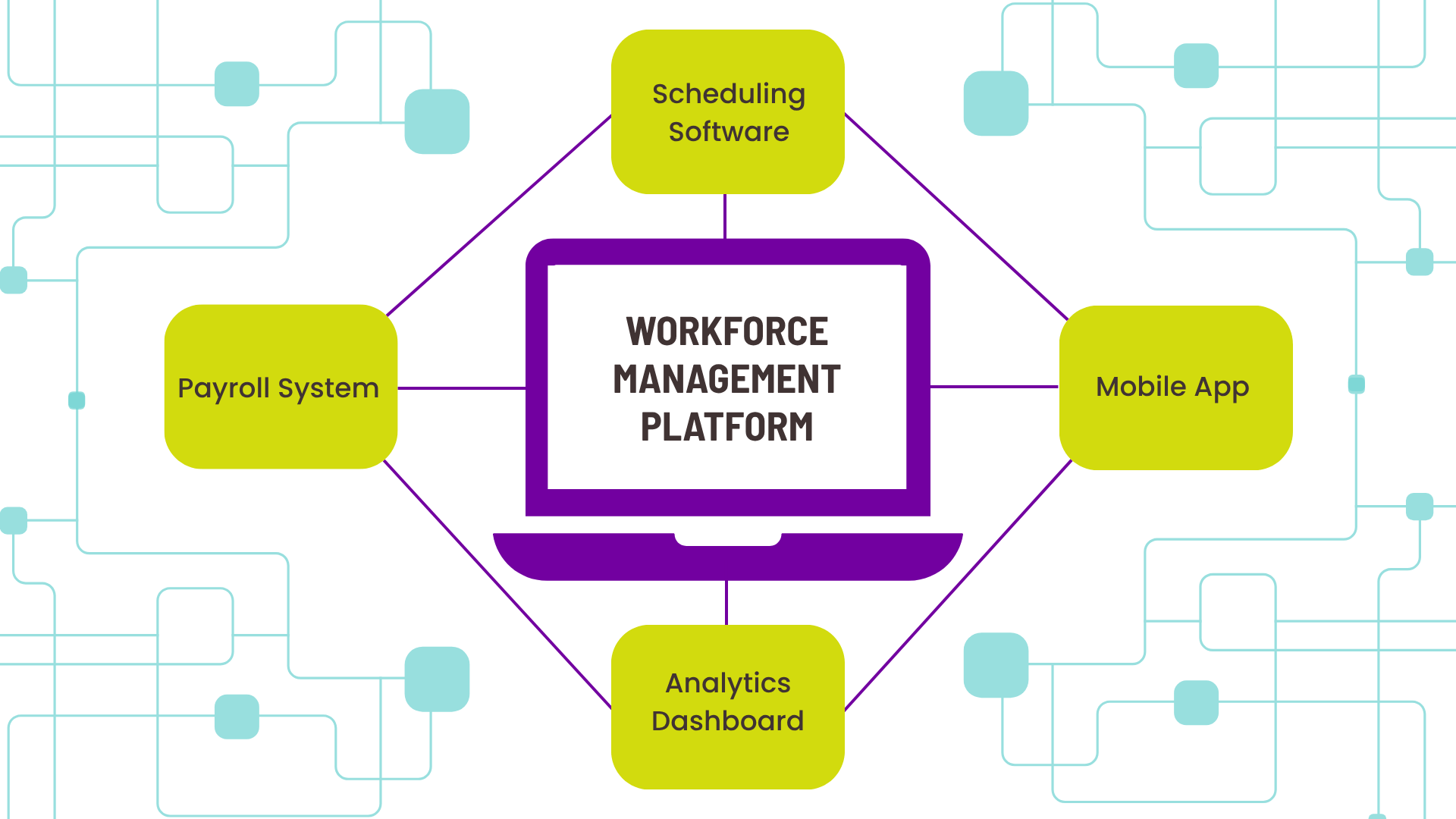Connecting the Dots: How Interoperability Is Reshaping Healthcare Staffing Systems

Running a clinical workforce is a high-stakes balancing act—patient needs change by the hour, staff schedules are complex, and every decision impacts care. Interoperability for healthcare staffing systems is changing that. By connecting data across platforms, health system leaders gain a complete, real-time view of their workforce, enabling faster decisions that boost efficiency and elevate patient outcomes.
What Is Interoperability for Healthcare Staffing Systems?
Interoperability for healthcare staffing systems is all about getting different workforce tools, such as scheduling, HR, credentialing, payroll, and patient-care platforms, to work together smoothly. It helps hospitals and health systems match clinicians with patient needs in real time, reduce admin headaches, and make smarter, data-driven decisions that improve care.
The Current State of Healthcare Staffing Interoperability
Healthcare interoperability has made significant progress, but the real challenge is turning data into actionable insight. In terms of staffing, that means organizing messy schedules, unifying data across systems, and ensuring the right clinician is in the right place at the right time.
According to Kelley Strandberg, vice president of nursing and workforce Innovation at ShiftMed, managing a clinical workforce across disconnected systems creates delays, confusion, and inefficiency inside health systems.
“The most important change health systems can make in integrating their workforce operations is to focus on true interoperability,” she said. “Managers shouldn’t have to juggle 10 different platforms to manage their workforce. The future lies in a single, integrated source of truth—one platform that unifies data, simplifies operations, and drives smarter decisions.”
Here's an overview of the current state of healthcare staffing interoperability:
AI and Automation in Scheduling
Health systems are increasingly utilizing AI in healthcare staffing. AI-based systems promote fairer and more transparent shift distribution, addressing issues like burnout and fatigue among nurses. Additionally, integrating nurse preferences into AI-supported scheduling methods is gaining traction, aiming to balance hospital needs with individual nurse preferences.
Open Shift Management
Open shift management platforms transform shift fulfillment by allowing nurses to claim unfilled shifts in real time. This approach reduces reliance on costly last-minute staffing solutions and enhances nurse satisfaction by offering greater scheduling autonomy.
Advanced Scheduling Algorithms
Innovative scheduling algorithms, such as Multi-Objective Genetic Algorithms (MOO-GA), are being developed to optimize workforce scheduling. These algorithms consider cost, patient care coverage, and staff satisfaction, leading to more balanced and efficient schedules.
Market Growth and Investment
The U.S. healthcare staffing and scheduling software market is booming, projected to reach $3.12 billion by 2033. Growth is driven by demand for greater efficiency, cost savings, and the adoption of predictive, AI-powered scheduling tools.

5 Key Benefits of Interoperability in Healthcare Staffing
Interoperability in healthcare staffing isn’t just a tech upgrade—it can completely change how your health system manages clinical teams. Management can make faster, more informed staffing decisions by linking scheduling, HR, credentialing, and patient-care systems. The result? Smoother operations, happier clinicians, and better care for patients. Here are five key benefits:
1. Real-Time Staffing Visibility
Integrated systems provide a clear view of who’s available, which shifts are covered, and where help is needed. Live dashboards let schedulers spot gaps and reassign clinicians instantly, keeping every unit fully staffed.
2. Compliance and Credentials Made Simple
Automated tracking keeps certifications, licenses, and training up to date. Clinicians are always qualified, compliance is maintained, and managers spend less time on manual paperwork.
3. Right Staff, Right Place
Instantly match clinician skills with patient needs by connecting staffing data to patient acuity and census, resulting in high-quality care and workforce satisfaction.
4. Reduce Overtime and Agency Costs
Real-time staffing insights let managers optimize internal resources before utilizing expensive temporary support, keeping shifts balanced, overtime down, and costs low.
5. Less Admin, More Patient Care
By integrating scheduling, HR, and credentialing data, teams spend less time juggling paperwork and more time focused on patients, improving efficiency and satisfaction.
3 Ways Interoperability Improves Healthcare Staffing
Managing staff effectively across a health system is complex—different units have unique needs, patient volumes fluctuate, and schedules constantly change. The following examples show the value of interoperability in different hospital settings:
1. Interoperability in Emergency Departments
Patient volume can spike unexpectedly in emergency departments. Without interoperability, a staffing coordinator must manually check multiple systems or call charge nurses to see who’s available. With interoperability, the staffing system automatically sees real-time patient load and nurse availability, allowing schedules to adjust instantly.
2. Interoperability in Medical-Surgical Units
In a med-surg unit, staffing depends on patient acuity and nurse skills. Without interoperability, managers juggle spreadsheets and paper notes. An integrated system, however, pulls data from patient records, certifications, and schedules automatically, creating accurate staffing plans and ensuring nurses are assigned where they’re needed most.
3. Interoperability in Specialty Units
Specialty units often require nurses with specific certifications or experience. Without interoperability, identifying qualified staff can take hours of calls and manual cross-checking. With interoperability, certifications, shift availability, and patient needs are all integrated, enabling fast, precise assignments.
FAQs About Interoperability in Healthcare Staffing
Q: What does interoperability mean in healthcare staffing?
A: Interoperability in healthcare staffing refers to the seamless exchange of workforce data across scheduling, HR, credentialing, payroll, and patient-care systems. It allows health systems to make faster, more informed staffing decisions and ensure the right clinicians are in the right place at the right time.
Q: How does interoperability improve workforce management?
A: By connecting data from multiple systems, interoperability gives managers real-time visibility into staff availability, certifications, and patient needs. This reduces scheduling errors, optimizes resources, lowers overtime and agency costs, and improves clinician satisfaction and patient care.
Q: What technologies enable staffing interoperability?
A: Interoperable staffing systems rely on technologies and standards such as APIs, HL7, and FHIR. These tools allow workforce, HR, scheduling, and clinical systems to share data seamlessly, creating a unified view of staffing and patient-care needs.
Connect, Optimize, and Transform Your Healthcare Workforce
Interoperability is transforming healthcare staffing, making it easier to match the right clinicians to the right shifts, reduce administrative burdens, and improve patient care. Health systems that embrace connected, data-driven staffing today are positioning themselves for the future.
Ready to simplify workforce management and unlock better outcomes? Schedule a free workforce consultation with ShiftMed today!